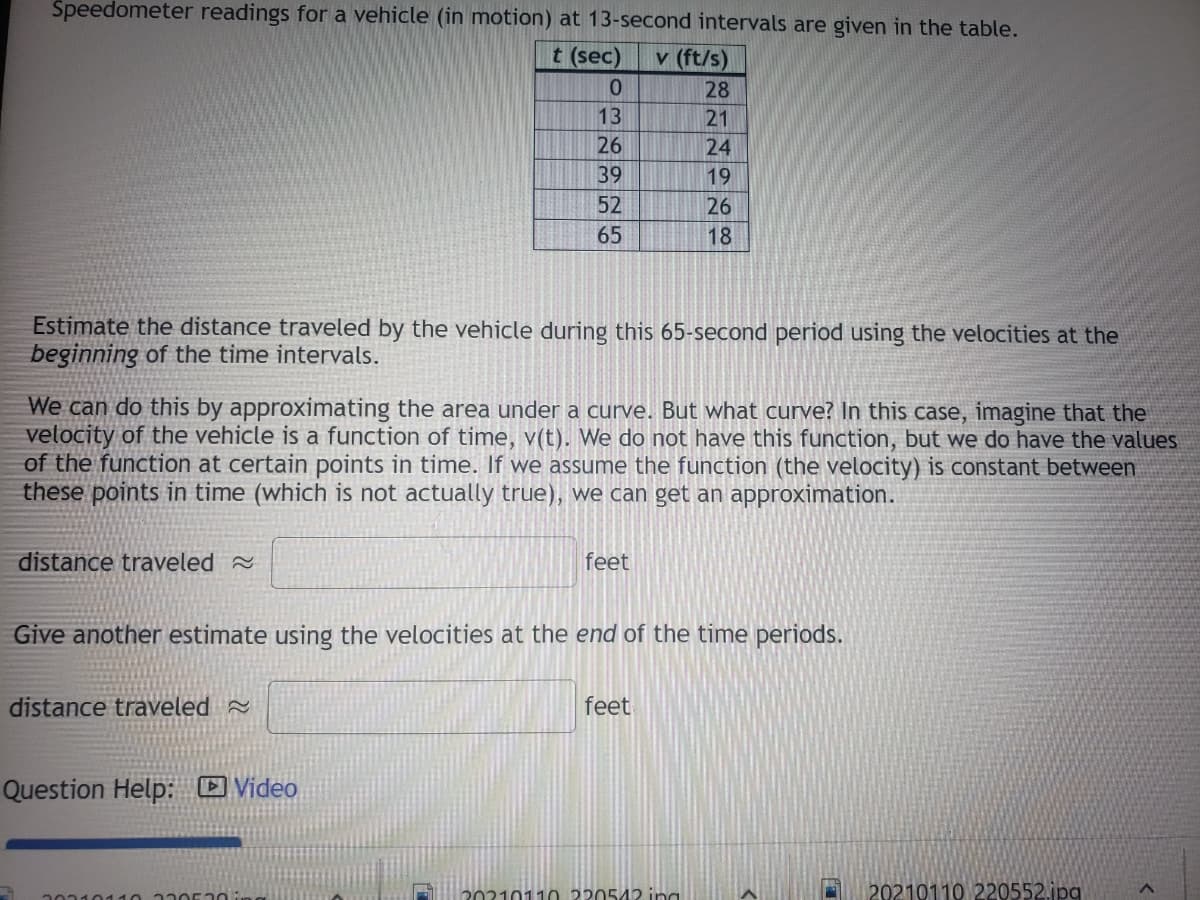Speedometer readings for a vehicle (in motion) at 13-second intervals are given in the table. t (sec) v (ft/s) 0. 28 13 21 26 24 39 52 26 65 18 Estimate the distance traveled by the vehicle during this 65-second period using the velocities at the beginning of the time intervals. We can do this by approximating the area under a curve. But what curve? In this case, imagine that the velocity of the vehicle is a function of time, v(t). We do not have this function, but we do have the values of the function at certain points in time. these points in time (which is not actually true), we can get an approximation. we assume the function (the velocity) is constant between distance traveled feet Give another estimate using the velocities at the end of the time periods. distance traveled feet 00- o 60
Displacement, Velocity and Acceleration
In classical mechanics, kinematics deals with the motion of a particle. It deals only with the position, velocity, acceleration, and displacement of a particle. It has no concern about the source of motion.
Linear Displacement
The term "displacement" refers to when something shifts away from its original "location," and "linear" refers to a straight line. As a result, “Linear Displacement” can be described as the movement of an object in a straight line along a single axis, for example, from side to side or up and down. Non-contact sensors such as LVDTs and other linear location sensors can calculate linear displacement. Non-contact sensors such as LVDTs and other linear location sensors can calculate linear displacement. Linear displacement is usually measured in millimeters or inches and may be positive or negative.

Trending now
This is a popular solution!
Step by step
Solved in 2 steps







